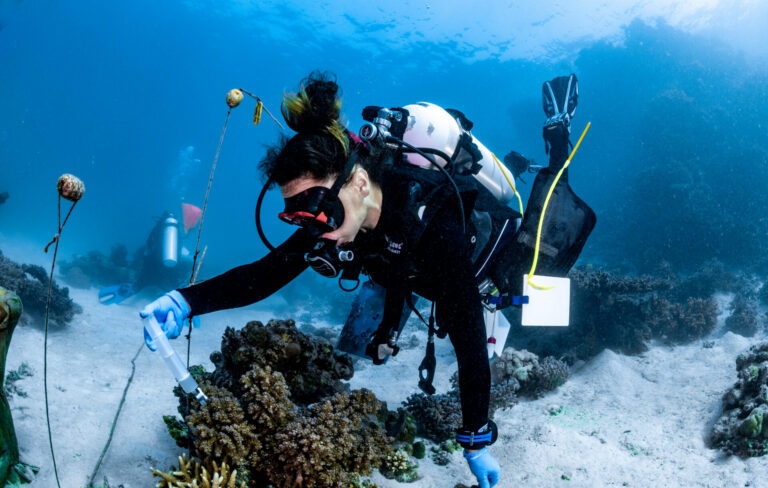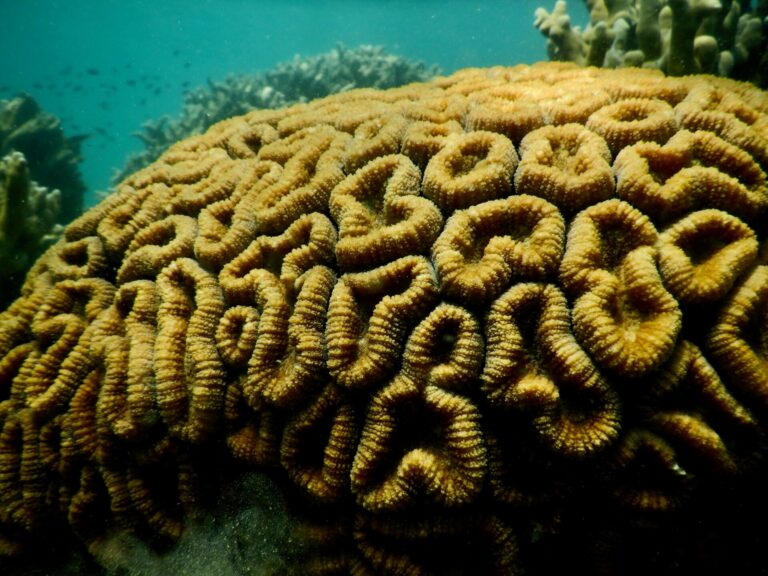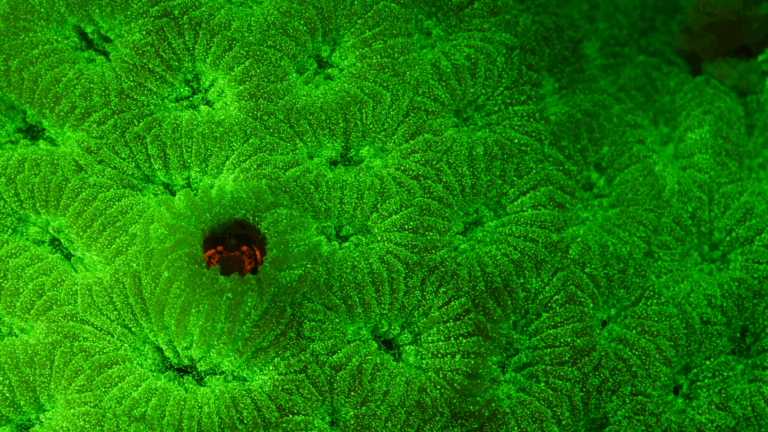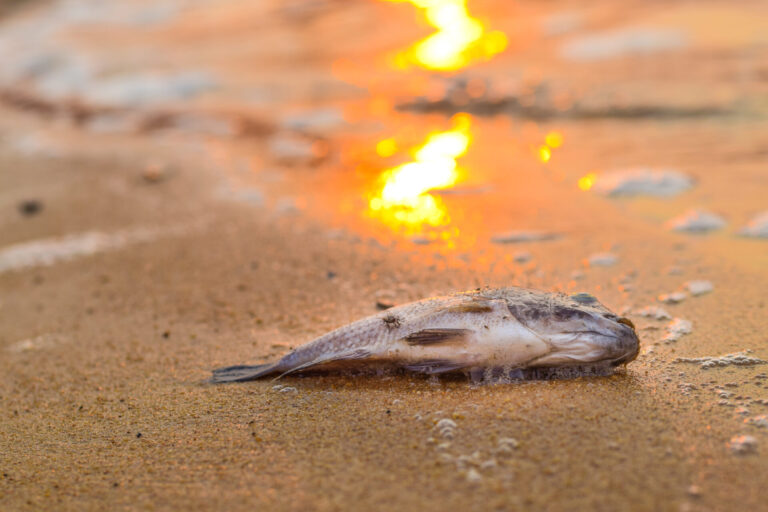Marine Science
Whale shark populations are young and transient
A population study of whale sharks in the Red Sea reveals unique group dynamics.


Each whale shark has a unique set of stripes and spots, making it feasible to identify individuals at a site.
© 2016 Tane Sinclair-Taylor
Despite being the largest known fish in the sea, little is known about the world’s population of whale sharks. Scientists at KAUST are conducting ongoing research into the Red Sea’s population to determine more about these elusive creatures and inform future conservation efforts.
Whale sharks live predominantly in open seas of the tropics, traveling long distances to feed on plankton. They are known to group together in aggregations at certain times of the year, although the exact purpose for the gatherings is unclear. In the Red Sea, whale sharks aggregate at Shib Habil, a small reef just off the Saudi Arabian coast, from March to May.
“There are around a dozen aggregation sites scattered across the globe, and each one is a small piece in a very large puzzle,” said Jesse Cochran from the University’s Red Sea Research Center, who is working on the project with colleagues Michael Berumen and Royale Hardenstine, in collaboration with scientists in the U.S. “Describing and comparing the sub-populations at these sites helps us to figure out how the individual aggregations fit into the species’ global ecology.”
Each whale shark has a unique set of stripes and spots, making it feasible to identify individuals at a site. The team took hundreds of photographs of the Shib Habil sharks between 2010 and 2015, and then used specialized software to identify 136 individual creatures. This data was used to calculate the lagged identification rate (LIR) for the population1.
“The LIR is the probability of re-sighting a shark after a certain time,” explained Cochran. “How likely are we to see the same shark after one day? Ten days? A thousand days? Once we have calculated the LIR, we can generate model populations with different characteristics. We then compare the models’ hypothetical LIR to the LIR calculated from the data to find the closest fit to describe the population.”
The more complex parts of the model provide details on attributes of the population, such as information on an individual’s movements and a group’s mortality rates, noted Berumen.
The team found that the Red Sea whale sharks were predominantly juveniles and were transient visitors. Unusually, the aggregation appears to comprise an equal ratio of males and females—other studies on different aggregations have found mainly male sharks.
“Sighting-independent methods, like acoustic monitoring, might help confirm some of these findings and further investigate this apparent sexual parity and integration,” Cochran said. “We are pursuing investigations along these lines.”
References
- Cochran, J.E.M., Hardenstine, R.S., Braun, C.D., Skomal, G.B., Thorrold, S.R. Xu, K, Genton, M.G. Berumen, M.L. Population structure of a whale shark Rhincodon typus aggregation in the Red Sea. Journal of Fish Biology 89, 1570-1582 (2016).| article
You might also like

Marine Science
A place to trial hope for global reef restoration

Marine Science
Reef-building coral shows signs of enhanced heat tolerance

Marine Science
Plastic-munching bacteria found across the seven seas

Marine Science
AI reveals the universal beauty of coral reef growth

Marine Science
Tiny crabs glow to stay hidden

Marine Science
Mass fish deaths linked to extreme marine heatwave in Red Sea

Marine Science
Weeding out the secrets of Red Sea macroalgae

Bioscience



